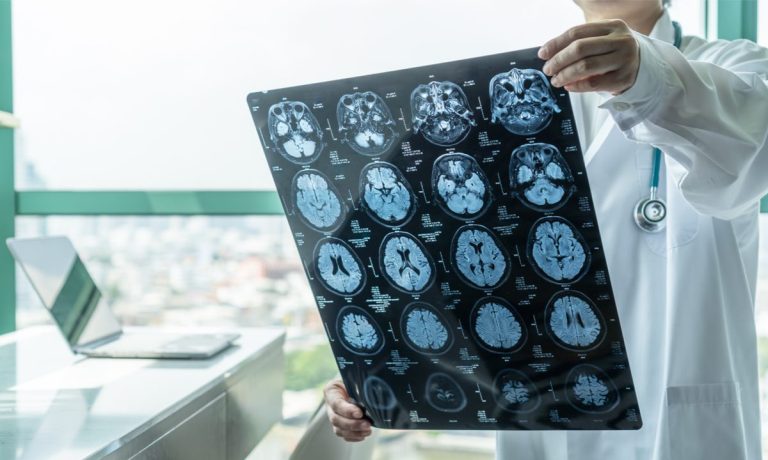Medical Image Sharing Platform Aims to Put DVDs of MRIs on the Scrap Heap

What’s the best way for a doctor to get the medical imaging tests they need to help determine the diagnosis of the patient?
In most cases, images are burned onto a CD and physically handed to patients to give to their practitioners. Despite broadband internet and the fact these images exist in digital file formats, it remains a painfully analog process — taking up medical practitioners’ time and resources and creating a lot of friction for the patient in need of a diagnosis.
Healthcare imaging has operated this way since the advent of disc-based optical media, but the pandemic is exposing its risky inefficiencies, as is the case in most industries at this point.
Innovation is solving the problem, as Rishi Nayyar, co-founder and CEO of digital health information firm PocketHealth, told PYMNTS’ Karen Webster. Now comes adoption.
It’s been an uphill climb versus the entrenched CD standard. Recalling his first time pitching the idea to a hospital, Nayyar said, “It was like, ‘Good luck. CDs are going to be around forever.’”
He explained that they didn’t mean it in a discouraging way — what they meant was that the healthcare imaging community has been trying to get rid of CD-ROMS for 20 years. However, Nayyar said he’s getting a different kind of response now than he did at inception.
“The answer now is largely yes,” he said. “The answer six years ago would’ve been largely no. We’ve seen a massive change where the balance of power in healthcare, overall, it’s shifting to the patient directly. People want access to their information.”
Including that first hospital that said no. “They were so thrilled to be proven wrong, because everybody wants this problem solved,” Nayyar said.
Medical File Sharing Gets an Update
The PocketHealth platform uses common file format known as Dicom, which Nayyar likens to JPEGs or PNGs, but for medicine. Images reside on PocketHealth’s HIPAA-compliant servers where hospitals and health systems can access and view images in medical-grade resolution online.
It currently stores more than 500 million images and has a network of 550 providers registered.
Makes a world of sense in 2022.
“It seems like in March 2020, every hospital in America woke up and realized, ‘Oh, my God, I can’t burn CDs anymore. I don’t even have PPE for my own staff, let alone patients coming in to pick up a CD-ROM,’” Nayyar said. “We’ve seen massive growth since then.”
Saying a silver lining to the pandemic is healthcare organizations taking a beat to fix these kinds of costly and risky legacy methods, Nayyar said, “They’ve been trying in a very centralized, clunky networked way, and that’s not how file sharing works in the real world. That’s not how payments work now, that’s not how regular file sharing works or how I would share a photo.
“Why should healthcare data move in a different way?”
See also: 62% of Digital-First Patients Used a New Healthcare Provider for Latest Visit
Going Deeper
While the clinical benefits to this type of imaging are almost self-explanatory, a huge part of the appeal of PocketHealth taps into a new mindset around the idea that patients want to own and access their own health data. It’s an approach that Nayyar said improves relationships between patients and practitioners.
“They can actually read the report, understand the depth in it,” he said. “We help explain that report to the patient on the platform.”
Having an understanding of the scan before meeting with one’s physician can turn a consultation into an action-planning session, giving both the patient and doctor a path forward. HIPAA compliance was built-in from the jump, he told Webster.
“You can’t build a system and then add HIPAA compliance, add security layers afterwards,” he continued. “We’ve been very purposeful about that. It makes me feel really great about where we are from the philosophy of HIPAA compliance and security that we embed into our system.”
Related: athenahealth Deal Shows Promise and Potential of Connected Health
The Portal Approach
Technological challenges to the PocketHealth solution were perhaps less strenuous than convincing legacy health organizations to alter their moribund imaging sharing practices.
“A lot of it boils down to how we transfer the images,” Nayyar said. He explained the differences between different types of data compression — which is applied to all digital media, from songs to movies — which made CDs, and then DVDs and streaming, possible
For the uninitiated, “lossy compression” takes less processing power, but degrades the image. Meanwhile, “lossless compression” takes up more bandwidth and retains perfect resolution.
“We’ve built a clever system that’s able to effortlessly transfer very large images without having to do lossy compression, and without putting undue strain on hospital systems,” he said.
The platform is patient-funded, with flexible pricing and a lifelong storage guarantee. They can subscribe for $50 per year or pay $5 per image processed on an as-needed basis.
Nayyar says that PocketHealth isn’t an imaging portal on behalf of the hospital, but rather one that was created for the benefit of the patient, storing data permanently for the patient. He believes that a person’s healthcare data is effectively their property and that they should have secure access to it.
It’s this patient-centric path PocketHealth is taking to grow.
“When we think about scaling up the platform, it’s really about helping patients [better] understand what’s going on in their own bodies,” he said. “We want to … go deeper … make it more robust, bring in visuals, etc.”
That said, Nayyar acknowledges that he and PocketHealth are still in the early innings.
“The majority of hospitals are burning CDs as their option one for all patients,” he said.